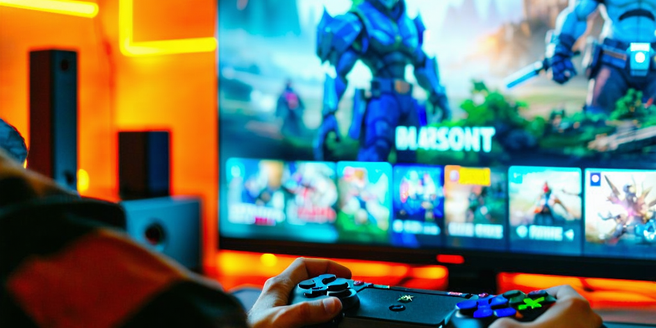
Understanding the Shift in Game Marketing Strategies
The gaming industry has undergone significant transformation in recent years, and marketing strategies have evolved to keep pace with these changes. Traditional advertising methods are giving way to more dynamic, targeted approaches such as digital marketing, data analytics, and personalized content. Companies are now focusing on creating engaging and interactive experiences that resonate with their target audience. This shift is driven by the need to meet the changing preferences of gamers who seek authenticity, community, and innovation. By leveraging modern technology, game developers can better understand player behaviors, preferences, and trends, allowing them to craft highly effective marketing strategies that not only attract new players but also retain existing ones. Adapting to these changes is essential for staying competitive in the fast-paced world of gaming.
Leveraging Social Media for Game Promotion
Social media platforms have become a powerful tool for game promotion, providing direct channels to engage with vast audiences. By creating compelling content tailored to different platforms, developers can reach potential players and generate buzz around their games. Platforms like Twitter, Facebook, and Instagram offer opportunities for interactive campaigns that allow gamers to participate and share their experiences, helping content go viral. Streaming services such as Twitch and YouTube enable live game demonstrations that can captivate and convert viewers into players. Integrating hashtags, memes, and challenges can further amplify reach by encouraging user-generated content. It’s important for marketers to understand the nuances of each platform to optimize their efforts. By maintaining an active presence and communicating authentically with fans, game companies can build loyal communities and drive successful game launches.
The Rise of Influencer Collaborations in Gaming
Collaborations with influencers have become a cornerstone of game marketing, as these partnerships offer exciting opportunities for reaching extensive networks of engaged followers. Influencers command trust within gaming communities, making them ideal partners for authentic promotion. Whether through sponsored content, live streams, or exclusive sneak peeks, influencers can showcase games in a way that resonates with their audience. These collaborations can lead to more organic engagement and genuine interest from potential players. Selecting the right influencer is crucial, as alignment with the game’s brand and target audience enhances the efficacy of the campaign. Moreover, collaborations can extend beyond online engagement, offering in-person events or virtual meet-and-greets that deepen connections with the gaming community. Leveraging influencers effectively can significantly enhance a game’s visibility in an increasingly competitive market.
Innovative In-Game Advertising Techniques
In the ever-evolving landscape of game marketing, innovative in-game advertising has emerged as a key strategy for both developers and brands. Instead of disrupting gameplay, ads are seamlessly integrated into the environment, enhancing the player’s experience. This could include branded items, billboards within the game world, or interactive storylines featuring real-world products. Such integration not only enhances realism but also creates a unique opportunity for brands to connect with players in an immersive setting. Additionally, dynamic in-game ads can be tailored to individual players based on their in-game actions and preferences, increasing relevance and engagement. As developers continue to experiment with non-invasive advertising techniques, the scope for creativity expands, setting new standards in how advertising and gaming partnerships can evolve.
The Impact of Augmented Reality on Game Promotions
Augmented Reality (AR) is transforming game promotions by offering unique immersive experiences that blend digital and physical worlds. By overlaying game elements onto real-world environments, AR provides players with interactive and engaging encounters that traditional media cannot match. Developers can use AR to create location-based promotions and events, encouraging players to explore their surroundings while simultaneously engaging with game content. This not only attracts new players but also enhances retention by creating a deeper connection to the game. Campaigns like scavenger hunts or exclusive AR collectibles can drive buzz and foster community interaction. As AR technology continues to advance, its role in game promotion will likely expand, providing endless opportunities to innovate how games are marketed and experienced.
Future Trends to Watch in Game Marketing
As technology progresses, several future trends are emerging in game marketing. Personalization, powered by artificial intelligence, is expected to play a significant role in creating tailored gaming experiences and marketing messages that resonate personally with players. Blockchain technology offers potential advantages for in-game economies and secure digital transactions, enhancing player trust and engagement. Virtual Reality (VR) is set to revolutionize gaming by providing fully immersive experiences, leading to novel promotional opportunities. Additionally, the rise of cross-platform play means that marketing strategies must adapt to engage players across diverse devices. Finally, with increasing awareness of digital well-being, responsible marketing that respects player time and engagement levels will become essential. By anticipating these trends, game marketers can better position themselves to capture the attention of an evolving audience.
